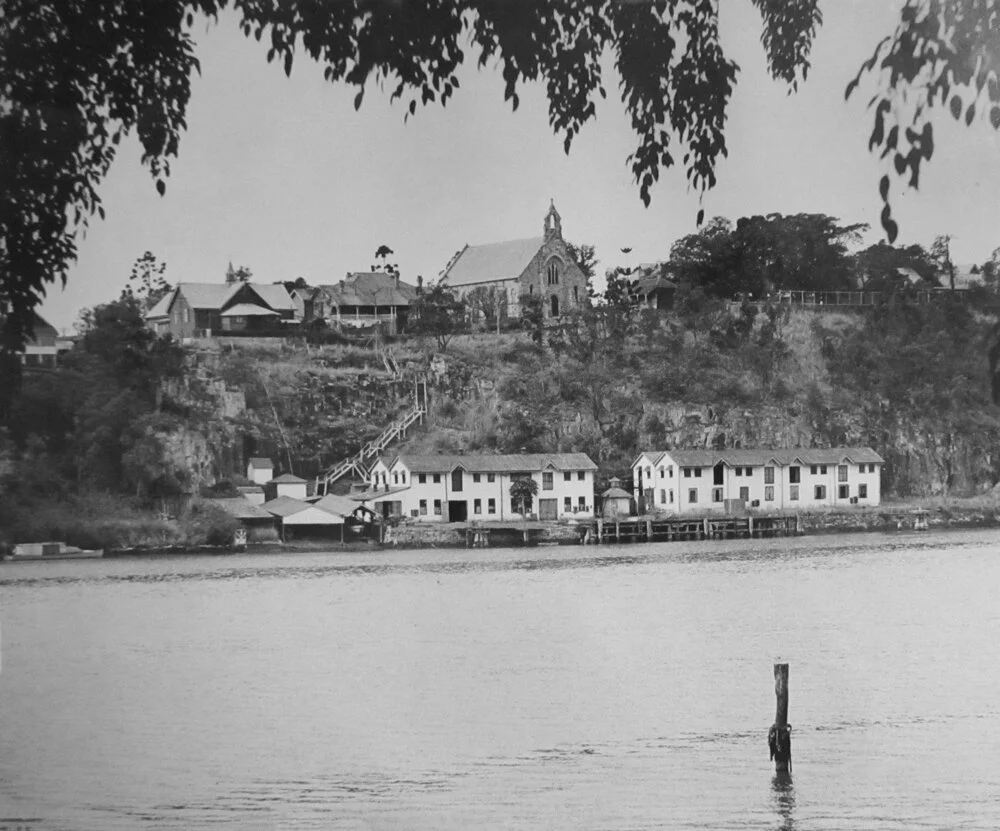Our History
St Mary's Anglican Church is a historic landmark located on the cliffs of Kangaroo Point in Brisbane, Australia. This magnificent church, which has been standing for over 150 years, is an excellent example of Victorian Gothic architecture. The church was built in 1873 by Alfred Grant, and it is one of two existing church buildings in Queensland that were designed by architect Richard George Suter.
The church’s history dates back to 1847 when the Parish of Kangaroo Point was established. The first Anglican church was built in John (now Rotherham) Street, and the first services were taken by Archdeacon Glennie of The Downs, with the first Rector being Rev. Bodenham. However, by the late 1860s, a larger church was needed, and the present site of St Mary's was acquired.
In September 1871, invitations were extended to build the new church, with the condition that the "cost not exceed 700 pounds." Architect Richard Suter designed the building, incorporating his distinctive organic 'tuff' stonework quarried from the Kangaroo Point Cliffs.
Construction of the church was completed in 1873, and on 5 November of that year, the church was consecrated by the then Governor of Queensland, His Excellency the Marquis of Normanby. The other two buildings that now make up this historic precinct followed, with the Hall built in 1879 and the Rectory in 1889. The site is an iconic landmark of Brisbane and was listed on the Queensland Heritage Register in 1992.
Over the years, St Mary's has faced numerous challenges. In 1892, a cyclone caused significant damage to the church, particularly the roof and belfry. The roof was replaced with ribbed galvanized iron, which remains to this day.
The church's pipe organ, installed in 1876, is Queensland's oldest and was built by H.C. Lincoln, Organ Builder to the King, London. It contains some pipes from the 1690s and remains an integral part of the church's worship.
Although the demographic of Kangaroo Point and St Mary’s has changed dramatically over its 150 years, the Parish is still an active place of worship and of significant family events, with some current Parishioners having links that extend back generations.
Naval Connections
The Warriors' Chapel, dedicated on St George's Day 1950, commemorates the fact that St Mary's was once the Naval Chapel for Queensland. The chapel contains the British and Australian Ensigns and a memorial to those who died in HMAS Voyager in 1964. Each year a service is held to commemorate those lost.
St Mary’s used to be connected to the Naval Stores below the quarry face by stairs, and was patronised by governors when they resided at Old Government House who used to travel across the river and via the stairs to attend service.
Scouts and Guides Connections
In 1906, Charles Smethurst Snow, while organist and choirmaster at St Marys, formed the first troop of the Boy Scouts in Queensland. Girl Guides, Brownies and Cubs followed later. The painting of the Gayndah shows a Guides hut at the top of the cliff near the western end of the Church. Each year a service is held in honour of our Scouts and Girl Guides.
Canon Garland
Canon Garland, the architect of Anzac Day, who developed the Anzac Day services we know today. The Canon Garland Memorial sits along the southern fence, adjoining the park.
